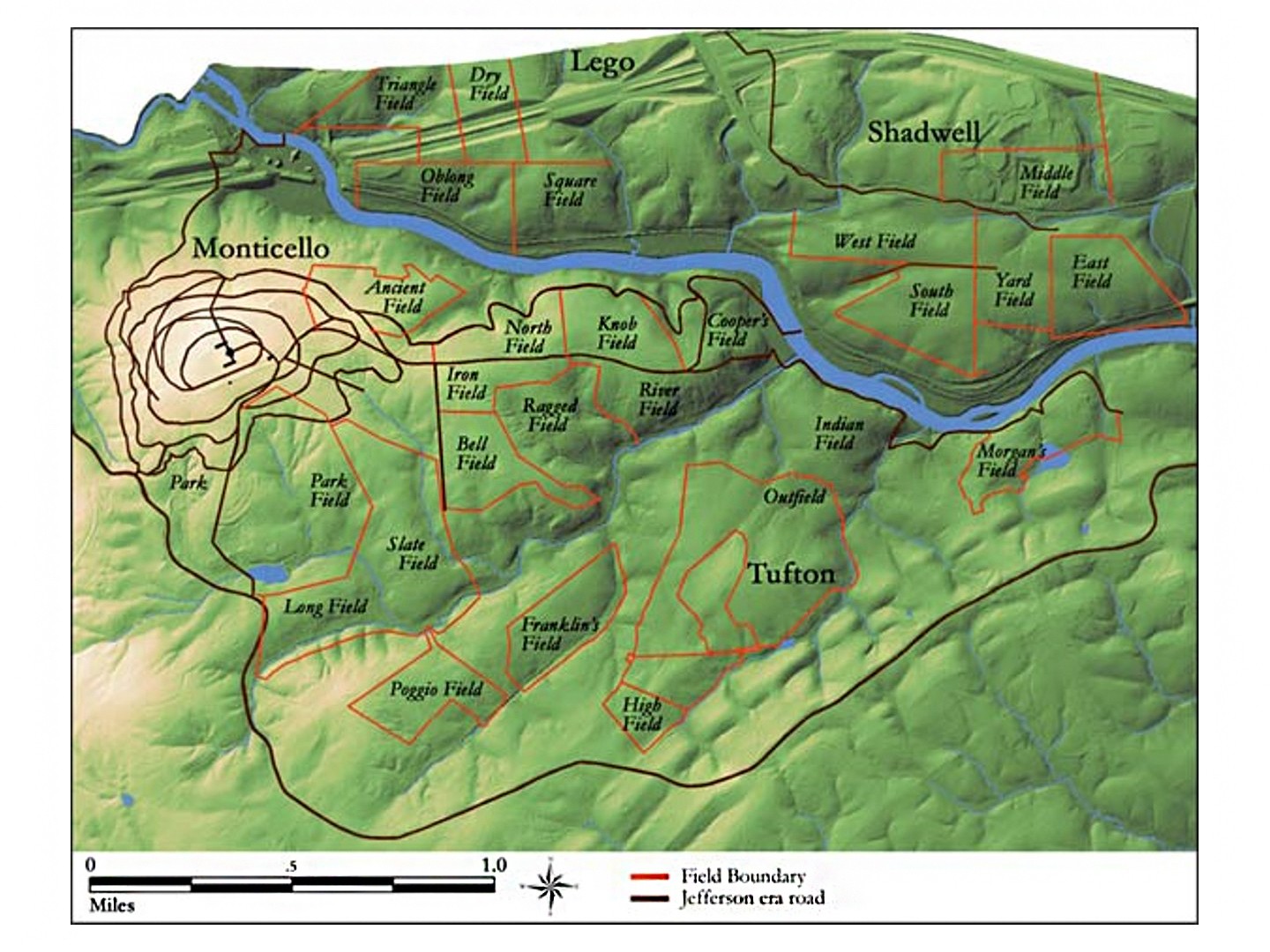Thomas Jefferson's landholdings in Albemarle County totaled some 5,000 acres. Measuring approximately eight square miles, the Monticello plantation's landscape featured wooded hills, two small mountains, rolling pastures, streams and the Rivanna River, which provided waterpower to Monticello's mills and — thanks to Jefferson's dredging efforts – a waterway to the markets in Richmond and beyond.
To manage this vast estate, Jefferson divided the land into separate "farms." Monticello mountain was the plantation's "home farm." Outlying lands were divided into manageable parcels known as "quarter farms" and were run by resident overseers. Thomas Jefferson's quarter farms were Tufton (adjacent to Monticello), Shadwell, and Lego (both north of the Rivanna River, which bisected his landholdings). Jefferson sought to further organize his farms by dividing them into agricultural fields of forty acres each.

